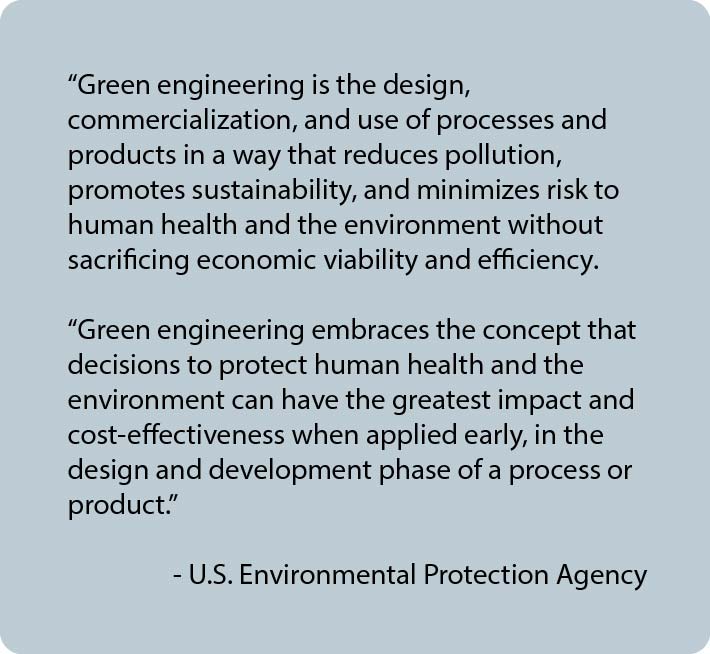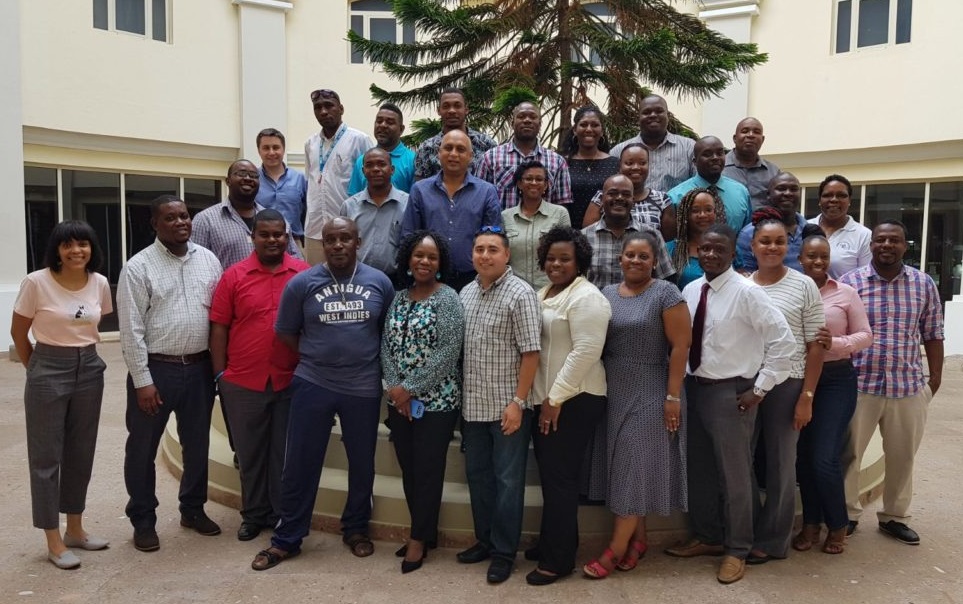
The Green Engineering Syllabus, which was introduced to students in the region in 2016, offers a mix of academic and practical content. The two-year course does not make someone an engineer, “but it gives you a good point of reference for any job you do,” explained Dr. Paulette Bynoe, Dean of the Faculty of Earth and Environmental Sciences at the University of Guyana, who headed the panel that developed the syllabus.

Green engineering, she said, looks at the big picture to determine how materials and processes can be structured to minimize environmental impact, meet high performance standards, and be viable economically. This is an area of potential interest not only to an engineer but to someone who might draft environmental regulations for a waste management system, for example, or someone looking to develop more sustainable approaches to tourism or agriculture.
“Environmental problems are everyone’s concern and everyone’s responsibility,” Bynoe said in a phone interview. “Regardless of what discipline you pursue, you are still an occupant of Planet Earth.”
One goal of green engineering is to minimize the use of materials and energy from the very start of a design process. In looking at what will go into a product, for example, an engineer might ask: How can this material be used sustainably? Is it hazardous? If so, will energy be required to treat it? How can it be disposed of at the end of its life cycle? In designing a building, a key concern might be how the architecture can capitalize on natural ventilation and use less energy.
The Green Engineering Syllabus is organized into two year-long units (“Introduction to Green Engineering” and “Application of Green Engineering Principles”), each of which comprises three modules. The material covers considerable ground, from the concept of sustainable development to the role of entropy in the manufacturing process. One section looks at lessons learned from nature about maximum efficiency in product design—a concept known as biomimicry. The syllabus also calls for students to visit industries or other facilities to examine sustainability issues in the field, and to build a detailed model to illustrate a design process.
The course is offered through the Caribbean Advanced Proficiency Examination (CAPE) curriculum, designed for students who have completed at least five years of secondary education and wish to further their studies. A CAPE associate degree would be roughly equivalent to a community college degree in the United States, according to Alsian Perry, Manager of Syllabus and Curriculum Development for the Caribbean Examinations Council (CXC), which administers tests and awards certificates and diplomas in 16 participating countries and territories.
In 2017, the first year that CXC offered testing in green engineering, there were 78 examination candidates, Perry said. The number of students enrolled in green engineering this year is only slightly higher, she said, but she hopes that the growing interest she has seen from teachers will lead to increased student enrollment in the future.
One feature of the Green Engineering Syllabus that is both a strength and a challenge is the interdisciplinary nature of the subject, which touches on such diverse areas as environmental science, physics, mathematics, biology, chemistry, engineering, electronics, and industrial technology. That holistic approach is central and helps students improve their problem-solving skills and critical thinking. “Students tend to compartmentalize knowledge,” Perry said. “This subject is bridging that gap.”
Yet the complexity of the topic also makes it difficult for any one teacher to tackle. CXC advocates incorporating some team teaching to cover all the bases.
Martha Russell, who teaches chemistry and environmental science at the Combermere School in Bridgetown, Barbados, said her school has tapped the expertise of different faculty members to teach green engineering.
“We’ve tried to distribute the workload and harness the strengths of the teachers that we have so no one teacher is teaching any unit,” she explained. Another challenge, she said, is the lack of a specialized textbook on the subject, which means teachers have to draw from existing science textbooks in related areas and find other resources.
Two events held in Jamaica this year, under the leadership of Paulette Bynoe, were designed to supplement the green engineering curriculum by providing teachers with more materials they can use in the classroom.
In early January, Bynoe led a workshop in Kingston to introduce and expand a digital toolkit she developed for CXC on green engineering, which is available to teachers and students through an online learning platform. At the workshop, the teachers reviewed existing videos, presentations, and other materials and uploaded more resources, keeping in mind such factors as relevance of the topic and scientific soundness.
A follow-up event, which took place April 4-6 in Montego Bay, brought together some two dozen teachers from 10 OAS member states and two British territories for a Green Engineering Boot Camp, in which participants worked on detailed lessons based on the available materials and the course objectives. The event also included a field trip to Wigton Windfarm Ltd. [see story on Wigton in the March 2018 issue of the ECPA newsletter], where the teachers got a closeup look at different types of renewable energy.
The events were hosted by CXC with support from the OAS, through the Caribbean Sustainable Energy Roadmap and Strategy (C-SERMS) Platform, an ongoing program to assist the member states of the Caribbean Community (CARICOM) in the transition to cleaner energy. Another sponsor was GIZ REETA, the German development agency’s Renewable Energy and Energy Efficiency Technical Assistance program.
Russell, who attended both workshops, said it was helpful to share ideas and insights with fellow teachers, adding that their discussions are continuing through a chat group. She is convinced that the basic ideas behind green engineering—using materials and energy in a more efficient and sustainable way—will be useful for many students, including “anybody who is thinking of producing a product, whatever that product is.”
For Dr. Bynoe, who in addition to her role at the University of Guyana serves as her country’s lead negotiator in the Conference of Parties (COP) process on climate change, the ability to understand environmental issues is central to today’s world. “I don’t know of any economic activity that is not dependent on some component of the environment,” she said. “People have to be able to understand that the issue of being an environmental citizen is not left to environmental specialists. It’s for every human being to understand.”

 View Map
View Map